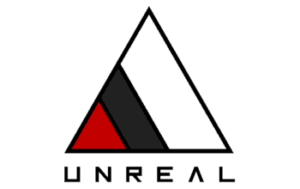SynthWave is a genre of electronic music that emerged in the late 2000s. It is characterized by its use of vintage sounds and analog synthesizers to create a retro-futuristic 1980s vibe.
Analog and digital synthesizers such as the Arturia Jun-6 V and Jup-8 V as well as drum machines can be used to create SynthWave, along with effects such as delay, chorus and flat reverb to emulate the sounds and styles of the 1970s/1980s.
The history of SynthWave
SynthWave has its roots in the electronic music of the late 1970s and 1980s. Bands like Kraftwerk used synthesizers to create futuristic sounds that influenced many SynthWave artists. 80s film soundtracks, such as those by John Carpenter, also influenced the genre.
This musical trend enjoyed a resurgence in the 2000s thanks to artists such as Kavinsky and Mitch Murder. These artists used analog synthesizers to recreate the sound of the 80s, and were popular with retro music fans.
Here’s a list of some of the best-known SynthWave artists:
- Kavinsky
- Mitch Murder
- Com Truise
- College
- The Midnight
- Timecop1983
- Trevor Something
There are of course many other SynthWave artists to discover, but these are a good starting point for exploring the genre.
Techniques for making SynthWave
SynthWave can be created with analog or digital synthesizers, whether hardware or VST plug-ins. Analog synthesizers are often preferred for their warm sound and unique character, reminiscent of the 1980s. Digital synthesizers can also be used to create more modern or futuristic sounds.
Reverb effects often used to create the SynthWave ambience are long Plate Reverbs, Convolution Reverbs (IR, Impulse Response) or Gate Reverbs to imitate all kinds of ambiences. These types of reverb can give sounds a sense of depth and ethereal dimension that are typical of SynthWave.
Steps to making SynthWave
- Start by opening your favorite DAW (Digital Audio Workstation, also known as a ‘Sequencer’). Those most commonly used for SynthWave include Ableton Live, Logic Pro X and FL Studio.
- Start composing using chords and melodies that are typical of SynthWave (see below). Choose a Pad synth and add a little Plate reverb, which you can use to compose until you’ve chosen a definitive sound.
Here are some examples of simple SynthWave chord progressions: – Em – D – C – B7 – Am – G – F – E – Dm – C – Bb – Am – Gm – F – Eb – Dm 3. Add drum rhythms using classic drum machines such as the Roland TR-808 and Roland TR-909 (see VST plug-ins list below)
Here’s the basic tablature for a SynthWave drum kit. This tablature includes a snare drum, a bass drum and a hi-hat (HH). The “x “s represent cymbal hits, the “o “s represent snare (SD) and bass (BD) hits, and the “|”s represent beats. You can of course modify this tablature to suit your own preferences, but it provides a good starting point for creating SynthWave drum rhythms.
The HH rhythm can be divided into four beats, with two cymbal strokes played on each beat. Thus, the tablature for HHs would be as follows:
HH|x-x-x-x-|x-x-x-x-|x-x-x-x-|x-x-x-x-|
SD|----o---|----o---|----o---|----o---|
BD|o---o---|o---o---|o---o---|o---o---|- Use reverb effects to create a retro-futuristic ambience. Plate reverbs, and convolution reverbs are all popular for creating SynthWave sounds. Take inspiration from other, similar tracks to be able to dose the level and duration of the reverb.
- Use deep synth bass and synth strings to add depth and dimension to your music. For a rich sound, use a synth with a simple, low sine wave sound for the bass (avoid adding reverb) and a synth pad with reverb for the chords.
- Add electric guitar elements for a rockier sound if you wish. Electric guitars are often used in SynthWave to add an extra dimension to the music. But keep the guitars in the background – you don’t want the track to sound too aggressive.
- Mix and edit your track to create a sound all your own. Make sure that all the elements of your track are well balanced and that the mix is clear. Try comparing your track with others of the same style to see what you need to adjust.
What instruments should I use to create SynthWave?
Synthesizers are often used to create SynthWave. Analog synthesizers are preferred for their vintage sound, while digital synthesizers are used to create more modern sounds and offer more control over audio parameters.
If you’re a fan of analog hardware synths, here are a few examples of synthesizers that can be used to make SynthWave:
- Roland Juno-60
- Korg Mono/Poly
- Sequential Circuits Prophet-5
- Roland Jupiter-8
- Yamaha CS-80
These synthesizers have been used in many SynthWave pieces and can be found second-hand on sites such as eBay and Reverb. If you don’t have the means or inclination to buy one of these synths, you may well use a VST version of the synths.
Drum machines are also commonly used to create drum rhythms for SynthWave tracks with classic drum machines such as the Roland TR-808 and Roland TR-909.
SynthWave VST synths and drum machines
As many analog synthesizers are hard to find, or overpriced, it’s often better to invest in plug-ins to imitate their sounds than to buy them. Unless, of course, you have the means and are an enthusiast.
Here’s a list of synths and drum machines you can use to make SynthWave, most of which are Windows and Mac compatible, in VST and ‘Audio Unit‘ :
- VST synths :
- Arturia Jun-6 V ( Juno-6 emulation)
- Arturia Jup-8 V ( Jupiter-8 emulation)
- U-he Diva
- Native Instruments Massive
- Xfer Records Serum
- Drum machines (Hardware) :
- VST drum machines :
- D16 Group Nepheton (808 emulation)
- AudioRealism ADM (808, 909, 606 emulation)
Arturia
Arturia’s VST synthesizers include a rather impressive number of 1980s synths and imitate them with near-perfect realism, including the aforementioned Juno and Jupiter:
DIVA from U-HE
For more modest wallets, there’s U-HE’s DIVA, with 1200 basic presets that let you imitate the analog synths of the 1980s.
Listen here:
Massive from Native Instruments
Massive needs no introduction: it’s a reference in VST synthesizer terms, especially since it’s published by one of the most serious publishers, Native Instruments :
Although the plugin already offers basic presets for making SynthWave, you can add other sounds to your library by visiting its online stores:
Serum from Xfer Records
Serum is another VST for SynthWave (and much more besides), with almost 450 synth presets:
Like Massive, it’s possible to enhance your preset library via additional preset packs:
- https://voicians.com/products/retro-synth-glow-50-serum-presets
- https://www.loopmasters.com/genres/139-Synthwave/products/5187-Synthwave-Serum-Presets
- https://www.loopmasters.com/genres/139-Synthwave/products/8712-80-s-Synths-For-Serum
- https://ostaudio.net/collections/bestsellers/products/amazing-serum (Video below)
Conclusion
In a nutshell, SynthWave is a style of electronic music that uses vintage 80s sounds and synthesizers to create a retro yet futuristic ambience. Both analog and digital synthesizers can be used to create SynthWave, along with effects such as chorus and long reverbs. Jupiter and Juno synthesizers and 808 and 909 drum machines are the most popular SynthWave instruments.







